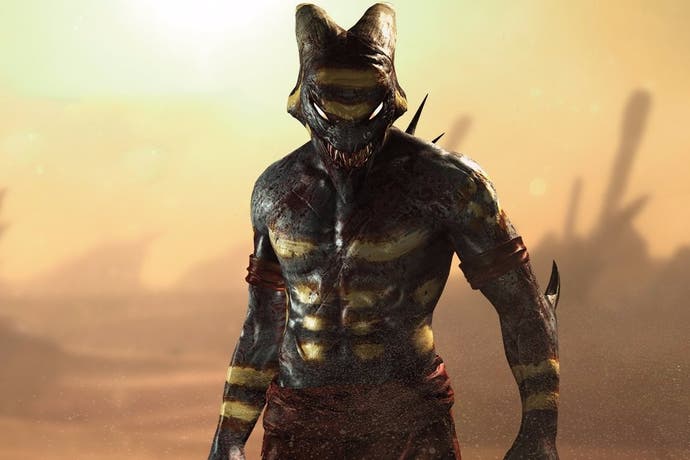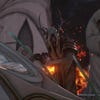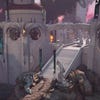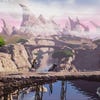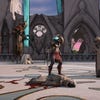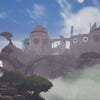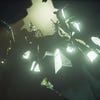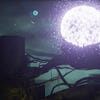Digital Foundry vs Shadow of the Beast on PS4
Altered Beast.
Created by small development team of seven people over a three year period, there are immediate parallels between the new Shadow of the Beast remake on PS4 and the Amiga original released in 1989 - both games were produced by modest studios looking to take advantage of the latest visual technology available, while showcasing their creative spark.
The original game impressed upon release with the game pushing up to 12 layers of parallax scrolling on-screen, in addition to featuring an optimised colour scheme to get the most out of the Commodore Amiga 500's limited 32 on-screen limit. Meanwhile, on PS4 advanced shaders, physically-based rendering, and per-pixel lighting take centrestage, showcasing a very different type of visual flair, while running at 60fps. The two games are a world apart from each other, but both are in tune with the latest advances in graphics technology for their respective eras.
The dramatic overhaul here in the PS4 remake brings a 16-bit classic to a whole new audience by expanding upon the original's simple gameplay and updating the mechanics to modern standards. It's a complete re-imagining of the game, taking cues from its other-worldly art design and memorably eclectic soundtrack, before reworking these into a whole new experience that is more polished and enjoyable to play. Going back to the original game, and the poor collision detection makes attacking an exercise in frustration, while the difficulty curve is absolutely brutal. It serves as a fantastic technical demo for early 16-bit titles, but doesn't offer much from a gameplay perspective.
Naturally, the remake rectifies all of these issues. The original's meagre move selection is massively expanded with various special attacks and counters, while battles take place in a limited play space surrounded by energy portals, putting a new twist on the core mechanics. Combat feels fluid and it's possible to chain together various attacks with ease - a dramatic change from the stiff and unforgiving original. Even so, the remake is still challenging, but crucially, it is no longer punishingly unfair. And for those who like an easier ride, there's even an option for unlimited continues in order to make the experience more palatable.
The core graphical choices also back up the gameplay, with the selection of effects work and lighting helping to add a unique atmosphere to the game that effectively pays homage to the original. Familiar locations are modelled in 3D with new areas not seen before. The action still takes place from a 2D perspective, but the use of sweeping camera pans, frequently zooming in and out of the environment creates a more dynamic gameplay experience, made possible by using 3D elements. The move to 3D rendering also allows for proper cut-scenes, which move the story along with short sequences that don't outstay their welcome, whereas static hand draw slides are used to set the scene in the original.
Physically-based rendering and per-pixel lighting give much of the alien landscape a realistic feel, with stonework, water, and mud appearing authentic as you battle your way through grassy plains, underground catacombs and other distinctive locals. High-dynamic range effects, bloom, and multiple light sources produce a district glow to the surroundings too and is often used to help generate atmosphere across the game's various stages. This combination works particularly well in The Dryad Kingdom, where volumetric effects and layers of fog in the background create a foreboding environment that draws the player into gloomy darkness.
Combat and cut-scenes are also enhanced by simple particle physics and alpha effects that cast light sources, sprucing up this aspect of the game. While high quality bokeh depth of field, alongside camera and object motion blur bring a filmic touch to the visuals. This combination of effects work and 3D modelling creates some striking visuals that certainly take advantage of the PS4 hardware to deliver a brand new take on familiar locations and characters, and at the same time remains respectful to the source material.
There's a fair amount happening on-screen and achieving this level of graphical quality while running at 60fps does come with a compromise. In this case Shadow of the Beast renders natively at 900p. This leads to image quality appearing quite soft and lacking the level of clarity one might expect from a pixel perfect 1080p presentation. A fairly low level of anisotropic filtering also blurs details on the ground as these move away from the camera. It's not an ideal situation, but there are minimal scaling artefacts on show, and heavy use of depth of field helps to hide shimmering that would otherwise appear in the background. Opting for a sub-native output also frees up additional GPU resources which can be used elsewhere. In this case the reduction in pixel count allows for the game to hit a smooth 60fps update on a regular basis.
The appearance of larger characters and boss battles has little impact on performance, with only an occasional dropped frame cropping up in these scenes. Gameplay remains consistent, and combat feels good. However, the game doesn't quite achieve a solid lock at 60fps at all times, and large numbers of enemies along with bandwidth-sapping alpha effects hit frame-rates a little harder. At worst we're looking at a drop down to the mid to low fifties at the end of The Grass Plains if Karamoon stage, which introduces some mild stutter into the mix. However, this soon passes and a solid 60fps update is re-established. This is a minor blemish on the experience, where there are occasions where the controls aren't completely consistent, but nothing that really gets in the way enjoying the action for more than a few seconds on occasion.
Overall, Shadow of the Beast is an interesting PS4 release. On one hand, the game serves as a modern remake of a fondly remembered 16-bit title, while on the other the developers haven't let the original game restrict their creativity. Rather than simply retreading old ground, the team has taken inspiration from the original in order to craft a new take on the experience, and the feeling of exploring a strange alien world for the first time. The brand new soundtrack by Ian Livingstone - no not the founder of Eidos - is also worth a mention here, delivering a varied mix that suits the strange worlds on offer. And of course this is backed up by solid gameplay that doesn't feel broken or unfinished, unlike the original.
The high difficulty level, the mix of combat and platforming, combined with familiar locations will surely go down well with fans of the original, but newcomers are also well catered for too. There's a layer of depth to the initially simple combat system, and the package is rounded off with striking visuals and a smooth 60fps frame-rate. Shadow of the Beast won't blow anyone away, but it's a graphically solid release with well thought out gameplay that's worth checking for those wanting an action game that plays homage to the 16-bit era. And of course, the Amiga original is included too. However, this isn't offered up on a plate, and will need to be unlocked - a fitting state of affairs, bearing in mind the crushing difficulty of the original.
